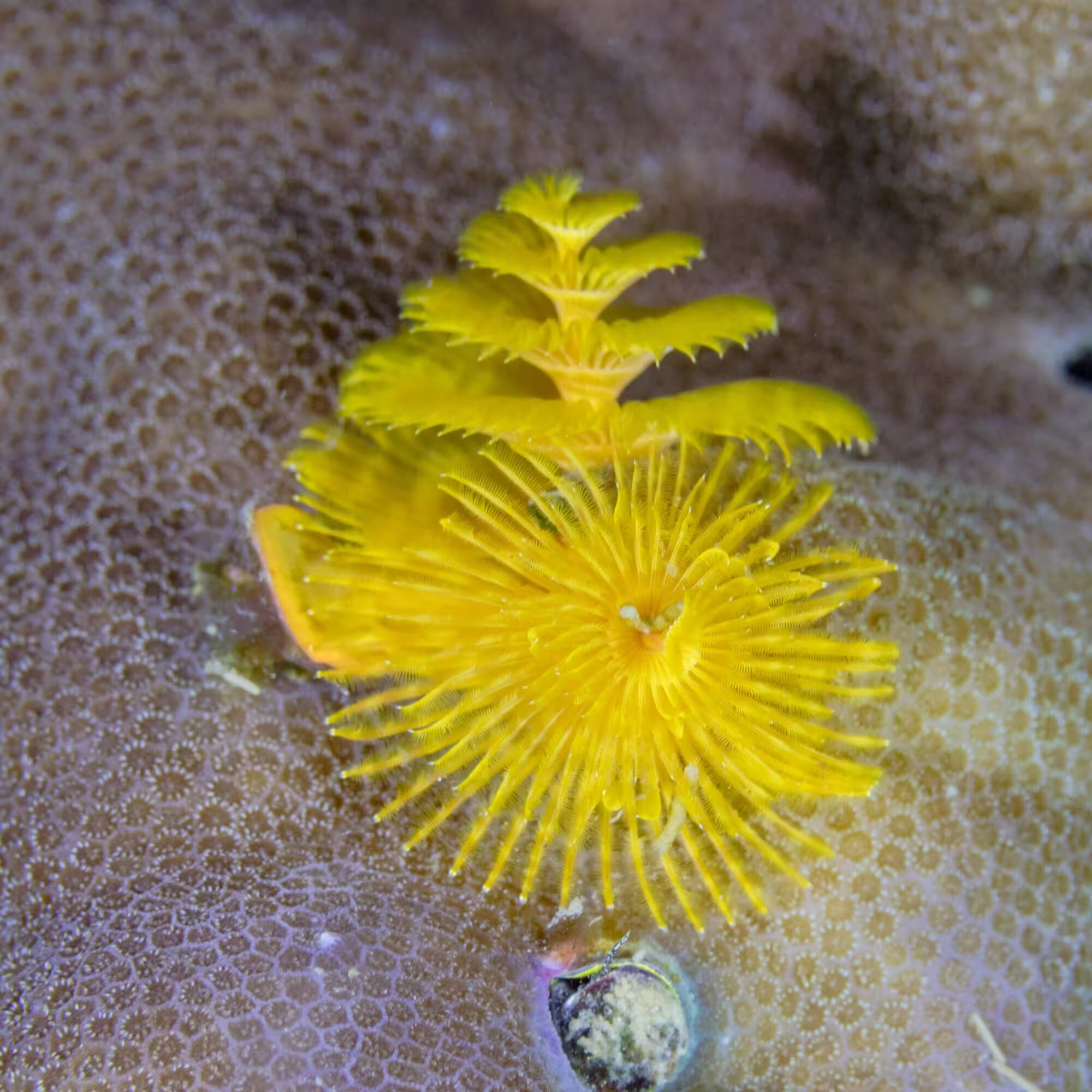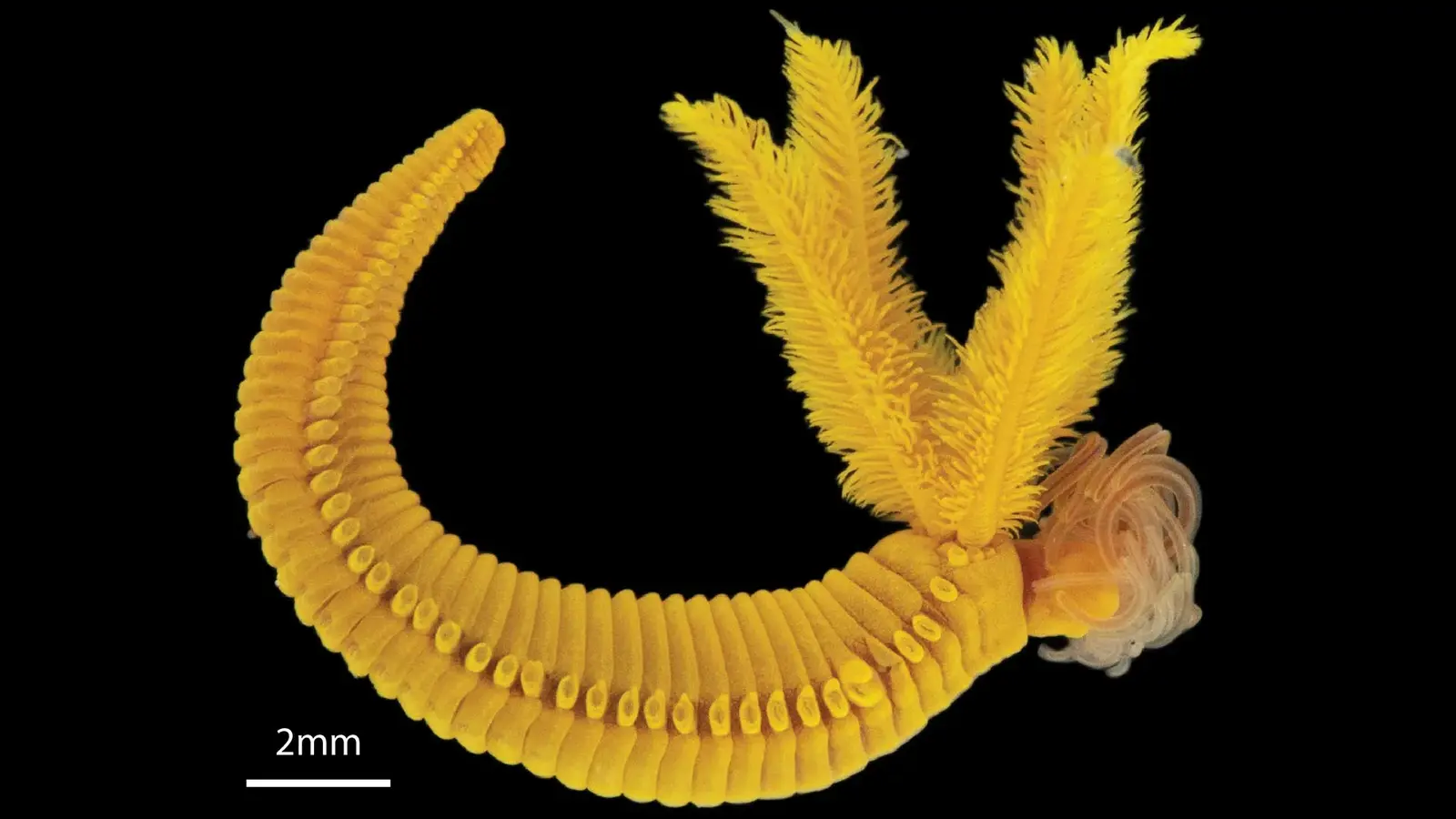5 Minutes
A newly described detoxification strategy allows a deep-sea worm to thrive within some of the planet's most chemically hostile habitats. Researchers led by Chaolun Li at the Institute of Oceanology, Chinese Academy of Sciences report that the tubeworm Paralvinella hessleri accumulates arsenic and then combines it with sulfide to generate tiny deposits of a yellow mineral—orpiment—inside its skin cells. The study, published August 26, 2025 in the open-access journal PLOS Biology, outlines microscopy, genetic and chemical analyses that reveal how this “fighting poison with poison” mechanism enables survival at hydrothermal vents.
Hydrothermal vent context and biological challenge
Hydrothermal vents are fissures on the seafloor that emit mineral-rich, superheated fluids. These plumes are globally important hotspots of chemical energy, supporting unique ecosystems of bacteria, worms, snails and other invertebrates. But vent fluids also contain hazardous compounds such as hydrogen sulfide and dissolved metals, including arsenic. In the western Pacific, Paralvinella hessleri occupies the hottest, most chemically intense zones, where environmental arsenic can accumulate in the worm’s tissues—sometimes exceeding 1% of body mass.
Understanding how vent animals tolerate such concentrations informs broader questions about extremophile physiology, element cycling at the seafloor, and the evolutionary strategies organisms use to cope with toxic environments.
Study methods and discovery
Li and colleagues combined high-resolution electron and optical microscopy with DNA, protein and chemical analyses to track arsenic distribution and chemical state within P. hessleri. Spectroscopic methods, including Raman analysis, were essential to characterize the nature of the yellow intracellular granules researchers observed under the microscope. These spherical, brightly colored granules proved to be mineral aggregates of orpiment (arsenic sulfide, As2S3).

How the reaction occurs
The team proposes that arsenic, taken up from vent fluids, is sequestered into epidermal cells as particulate matter or conjugates. There, exposure to abundant sulfide from the surrounding vent fluids—and possibly biochemical sulfide delivered internally—promotes formation of orpiment crystals. By converting dissolved or reactive arsenic into an insoluble mineral phase, the worm effectively reduces the bioavailability and immediate toxicity of the element.
Key findings and implications
The identification of intracellular orpiment deposits represents a novel detoxification route for a metazoan. Previous reports documented elevated arsenic in related vent annelids and some vent gastropods; this study suggests that mineralization to arsenic sulfide may be a wider strategy among vent fauna. Mineral sequestration changes how arsenic cycles within vent ecosystems and may influence predator–prey interactions, long-term storage of toxic elements in biomass, and the geochemical fingerprinting of vent deposits.
Coauthor Hao Wang described the visual impact of the discovery: seeing the vivid yellow worms on an ROV monitor against white biofilms and dark vent rock emphasized both their striking appearance and the extreme environment they inhabit. The team also noted the curious cultural resonance that orpiment—historically used as a golden pigment in medieval and Renaissance art—has with this biological process.
Expert Insight
Dr. Elena Morales, marine biogeochemist at the Ocean Chemistry Institute (fictional), comments: "This study bridges cellular biology and geochemistry. The ability to precipitate orpiment intracellularly not only provides a detox route but also suggests vent animals can actively transform and stabilize dissolved toxicants. It raises exciting questions about genetic pathways underlying metal handling in extremophiles and potential biotechnological applications for bioremediation."
Future directions and technologies
Follow-up work will seek to identify the molecular transporters and enzymes that mediate arsenic uptake, sulfide handling and mineral nucleation. Advanced in situ sampling by ROVs, coupled with single-cell sequencing and nanoscale chemical imaging, will clarify whether mineralization is passive or biologically regulated. There may also be implications for biomining and engineered bioremediation: organisms that convert soluble toxins into stable mineral forms could inspire new approaches to mitigate contaminated waters.
Conclusion
Paralvinella hessleri demonstrates a previously unrecognized biological strategy: intracellular mineralization of arsenic with sulfide to form orpiment. This mechanism reduces immediate toxicity and enables life in arsenic- and sulfide-rich hydrothermal vent habitats. The finding reshapes our understanding of how marine invertebrates interact with toxic elements and highlights the deep sea as a source of novel biochemical solutions to extreme environmental challenges.
Source: sciencedaily


Leave a Comment